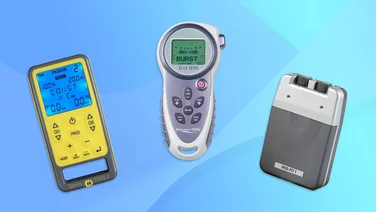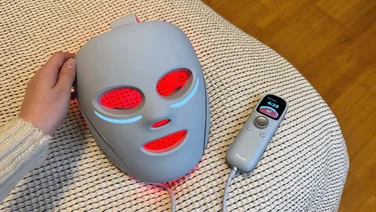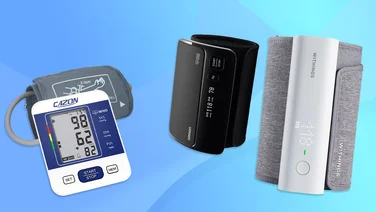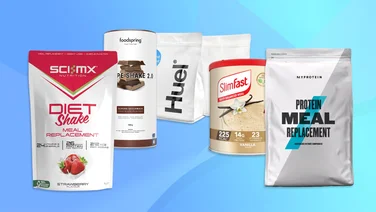To help us provide you with free impartial advice, we may earn a commission if you buy through links on our site. Learn more
- Best tennis racquets: At a glance
- How to choose the best tennis racquet for you
- The best tennis racquets you can buy in 2024
- 1. Head Speed MP 2022: Best all-rounder
- 2. Babolat Pure Aero 2019: Best value spin machine
- 3. Babolat Pure Drive 2021: The best tennis racquet for consistent power
- 4. Wilson Clash 100: The best tennis racquet for “feel”
- 5. Babolat Pure Aero Rafa Junior 26: The best tennis racquet for keen, older children
- 6. Prince Vortex 100: The best racquet for spin potential
- 7. Wilson Clash 100 V2.0: The comfort king

It doesn’t matter if you’re a tennis champion, picking up a racquet for the first time in years or have never played before in your life: choosing the best tennis racquet for you makes a huge difference. And the key word there is “you”.
Every player is different, and a racquet that’s ideal for a friend could be completely wrong for your game. Here, we’ll reveal not only what to look for when buying a tennis racquet, but also provide our picks of the best tennis racquets for different budgets, playing styles and skill levels.
We’re continually testing racquets and adding to this article as we do, so be sure to check back for updates on the latest models. If you’re new to tennis, or find you need to brush up on your tennis racquet terminology while reading our reviews, check out our best tennis racquet for beginners article. There, we talk you through the most user-friendly racquets that tend to be on the cheaper end, and supply a glossary of important tennis racquet buzzwords.
Best tennis racquets: At a glance
- Best all-rounder: Head Speed MP 2022 | Buy now
- Best light tennis racquet for improving players: Head Ti S6 Titanium | Buy now
- Best racquet for consistent power: Babolat Pure Drive 2021 | Buy now
How to choose the best tennis racquet for you
How much should I pay?
For beginners racquets, we managed to find plenty of great choices under or around the £100 mark. For the improver and higher-end choices we’ll cover in this article, the prices will range anywhere from £100-£250, depending on the make and model.
It’s true that you don’t have to spend upwards of £200 to get a great racquet, but more and more racquets are creeping up to that price. Luckily, many retailers and shops have a demo system in place, so be sure to ask if you can put down a deposit and give a racquet a try before you buy.
What difference does weight make?
There are plenty of weight options out there. While many manufacturers used to split their product ranges up into male and female racquets, we’re now seeing brands like Head and Babolat produce three variations of each frame to cater to everyone. Head, for example, split their ranges into “Lite” models, MP (Mid-Plus) and Pro, with Pro being the heaviest.We think 300g is a good sweet spot to aim for (for men and women). If you’re of a lighter build then consider a racquet under or around 280g, and if you like to crush the ball, perhaps look for something over 300g.
Will a heavier racquet give me tennis elbow?
Yes, and no. Depending on your build, and most importantly, your technique, tennis elbow can come about no matter the racket you use. Although a heavier frame can produce more problems, the main stat you should look out for if you’re concerned about injuries is a racquet’s stiffness rating.
Stiffness is how flexible or rigid a frame is. We measure stiffness on the RA rating model of 0-100. Stiff rackets earn a rating of 70 and up, while more flexible frames will be below that. For the most part, a racquet that is less stiff will be easier on your arm. If you’re worried about tennis elbow, we’d recommend heading to a physio, assessing your technique with video analysis or a coach and even taking a look at the grips you use for your shots. More often than not, these can fix elbow injuries more than splashing out on a different racquet can.
Which racquet head size should I choose?
If you’re an improver or you’re picking tennis back up after a long break away, then you may enjoy a racquet with a larger head size; anything around 100 square inches and up will have a generous size of “sweet spot” and will increase power and margin for error.
Some advanced players might opt for racquets with head sizes under 100 square inches, as this gives them more control over the ball while decreasing the sweet spot. In all honesty, we’d recommend changing string pattern before moving down in head size, as often this gives the benefits these players are looking for without compromising on sweet spot and relying on pin-point hand-eye coordination for every single shot.
What do the grip sizes mean?
Adult racquets come with a choice of grip sizes denoted by the numerals 0 to 5, while children’s grip sizes are clumsily labelled with sizes of 00, 000, 0000 and 00000. Sometimes websites say Grip 2, for example, other times G2, and you may even see L2. But fear not: what matters is that the larger the number, the bigger the circumference. Here’s a quick conversion into inches:
- 00000 is 3½in
- 0000 is 3⅝in
- 000 is 3¾in
- 00 is 3⅞in
- 0 is 4in
- 1 is 4⅛in
- 2 is 4¼in
- 3 is 4⅜in
- 4 is 4½in
- 5 is 4⅝in
You can take a rough measurement of your own hand as a guide: place a ruler flat on your palm (level with your thumb) and measure to the tip of your ring finger. However, the best way to find out is to pick up someone else’s racquet and play with it for a few minutes. The grip size is printed on the racquet’s base, so you can judge, Goldilocks style, if it’s too big, too small or just right.
Note that you should err on a smaller size if you aren’t sure, as you can always put an extra grip over the top of the existing grip.
Will my racquet come with strings?
Racquets costing under £100 almost always come with factory strings, but more advanced players are better off choosing an unstrung racquet and then choosing their own string. This allows you to specify the right tension for you, and choose the precise string that you like.
Unless you have a special machine and have been taught to do it, you can’t just string racquets up yourself, so your local club or stringing service is the best place to go for advice if you’re unsure. Like the frames themselves, we’d suggest you try lots of different ones. It can give you a better frame of reference and improve things about your game you never thought could be.
What difference do the brands make?
It used to be the case that each manufacturer was the best at one specific thing. For example, Babolat has always been known for easy power and spin, and Wilson has typically been great for racquets with excellent feel. Nowadays, the biggest manufacturers have learned from one another and grown, diversifying their portfolios to cater to everyone. The racquet market has never been so diverse and exciting. Head make great all-round rackets, Wilson has a premier line of rackets, each one specialising in an important selling point, and Babolat continues to produce user-friendly frames that are excedingly popular.
You may have a favourite brand, or you may be looking to switch. What we’d recommend is trying out as many racquets as you can. Checking out our reviews is going to be useful (we hope), but nothing will provide the right frame of reference for you other than testing out different things. If your local racquet shop provides demo models, get exploring and have some fun.
READ NEXT: The best fitness trackers to buy
The best tennis racquets you can buy in 2024
1. Head Speed MP 2022: Best all-rounder

Price: £220 | Buy now from Bruntsfield Sports
Be warned: this racket gives you a surprising amount of power. Head’s innovative Auxetic technology bottom loads this frame with nothing but pop. It makes the Speed MP a bulldozer that rivals the easily accessible power of something like the Pure Drive, but with a much lower stiffness rating that’s friendlier on your arm. Of the rackets we’ve tested, this is one of the truest jack-of-all trades you can get.
Usually, with a racket that gives this type of power, you need to trade off something like feel, but that couldn’t be further from the case here. The Speed MP made drop shots one of the easiest shots to hit, regardless of court position. Volleys were equally satisfying and were easily varied to surprise opponents. On serve, the Speed MP lacked a clear sense of plow-through that’s definitely absent in ground strokes as well. It’s one of the few shortcomings of this racket that can sometimes make it feel a little unwieldy – as though you have no idea where all that power is coming from. On the other hand, this is something that could potentially be solved by upgrading to the slightly heavier Pro model.
Don’t take our warning up top lightly – this racket has some serious oomph to it that sometimes means a lack of control. After you’re used to it, however, this racket is a weapon from every area of the court.
Key specs – Head size: 100in²; Weight: 300g (unstrung); Composition: Graphite; Stiffness rating: 64; String pattern: 16×19
2. Babolat Pure Aero 2019: Best value spin machine

Price: £165 | Buy now from Decathlon
Although there is a 2023 version of the Babolat Pure Aero 2019, we found in our testing that it didn’t play all that differently from the 2019 version, offering only incremental upgrades to stability and feel. Given that the price is now lower, we’d recommend that while stocks last, you get yourself one of the 2019 frames. Like the 2023 version, the Pure Aero 2019 has all the traits of a Pure Aero; superb access to spin, easy power, excellent control for a racket this stiff and a pretty glaring lack of feel.
This is perhaps one of the more marmite rackets available on the market. It handles spin, power and control better than 90% of its rivals, but that lack of feel combined with a high stiffness rating makes it uncomfortable for a lot of people.
We’d recommend this racket to anyone who likes to put a lot of spin and variation in their shots to upset their opponent’s rhythm. It’s also a great match for clay court animals who love to defend and counter-punch. If you want something that gives you as much stability and feel as this line of rackets can offer, seek out the Pure Aero 2023, but in our opinion the 2019 frame delivers a near-identical experience for less.
Key specs – Head size: 100in²; Weight: 300g; Composition: Graphite; Stiffness rating: 71; String pattern: 16×19
3. Babolat Pure Drive 2021: The best tennis racquet for consistent power

Price: £173 | Buy now from Tennis Nuts
The Babolat Pure Drive has long been a favourite among club players, and this 2021 edition includes some minor improvements to keep it at the top of the game. It’s loved due to its balance between power and control: at 300g it shouldn’t give most players (male or female) aching arms, but has enough meat to it that if you need to turn on the pace then it can deliver.
For the best control, we recommend you invest in some Babolat RPM Blast strings (as with most high-end racquets, the Pure Drive is supplied unstrung). We recommend the RPM Blast as it plays particularly well with this Babolat racquet: we found it added more control for drop shots and an extra dollop of spin.
The final thing we like about the Pure Drive is its price. While other racquets are brasher and laden with player endorsements, this understated racquet continues to win fans among competitive club players.
Key specs – Head size: 100 square inches; Weight: 300g; Composition: Graphite; Stiffness rating: 71; String pattern: 16×19
4. Wilson Clash 100: The best tennis racquet for “feel”

Price: £187 | Buy now from Amazon
Here’s one for players who have a delicate touch: the Wilson Clash 100 provides a “feel” for the ball like nothing else we’ve tested, with one tennis coach we know (and a long-time Babolat Pure Drive advocate) switching to it for precisely this reason.
Much of this comes from the Clash 100’s flexible frame, which was Wilson’s intention when designing it. This should give you a longer contact with the ball, and if you have the right technique that means you’ll have greater control.
We don’t recommend it to hard-hitters, who will benefit from a heavier frame, but it still offers enough power for that moment when you need to hit a clean winner down the line.
Key specs – Head size: 115 square inches; Weight: 225g; Composition: Graphite and titanium
5. Babolat Pure Aero Rafa Junior 26: The best tennis racquet for keen, older children

Price: £89 | Buy now from Tennis Nuts
You only need to hold the Pure Aero Rafa Junior 26 to realise what an upgrade it is on the more basic Head Radical (above). Inspired by the Pure Aero racquet that Rafael Nadal uses to thump balls into oblivion, the Rafa Junior 26 is geared for spin.
Unlike the adult version of this racquet, it isn’t overly heavy: a weight of 250g puts it at the upper end for children’s racquets, so we wouldn’t choose it for a ten-year-old, but if your child is 12-15 and loves to play then it’s a super stepping stone before they move into the realm of full-size racquets.
The final positive to note is that it’s made from graphite, like many top-quality adult racquets. This not only helps reduce vibration but also gives a sound – when they hit the ball right – that older children will love.
Key specs – Head size: 100 square inches; Weight: 250g; Composition: Graphite
6. Prince Vortex 100: The best racquet for spin potential

Price: £190 | Buy now from Pro:Direct
Prince has been on quite the journey as a tennis brand in the last few years. Ups and downs aside, they’ve created something truly innovative here with the Vortex. Right away, you’ll notice the V-shaped bottom to the beam, and the more keen-eyed may even notice the unheard of 14×21 string pattern. Safe to say, this racquet feels like no other we’ve tested for this list. It’s eye-catching and unique, thanks to these bold design choices, and the results are just as intriguing.
For anyone who struggles to access spin in their game, look no further. No other frame, not even the Babolat Pure Aero, will give you access to spin this easily, thanks to the 21 crosses and 14 mains dragging the ball in the direction of your swing. Though bear in mind, this extreme string pattern can sometimes result in sacrifices – there’s a slightly inconsistent feel to the Vortex and, if you’re someone who plays with a lot of spin already, it may not be for you because you’ll need to adjust your launch angle to make up for a lack of power.
Like we say, there isn’t another frame like this, and it definitely takes some getting used to. However, once you do, half-court balls, and serving in particular, garner incredible results that will keep your opponents guessing. And if you’re looking to access a bit more spin without changing your technique, this is a strong choice.
Key specs – Head size: 100in²; Weight: 300g (unstrung); Composition: Graphite; String pattern: 14×21
7. Wilson Clash 100 V2.0: The comfort king

Price: £220 | Buy now from Bruntsfield Sports
This all-rounder frame is a brilliant choice for anyone looking for a bit of everything. It has a 100in² head size and 16×9 string pattern, which gives you solid access to power and spin. Though the Clash’s biggest strength has to be its super-generous sweet spot size, because no matter where you hit the ball on the string bed, you never feel like you’ve lost control. Out of all the racquets we’ve tested thus far, it’s the most consistent in terms of feel. This is easily one of the best all-rounders to make the list, and a very comfortable option for the all-court player.
If there’s a flaw, it’s perhaps a lack of plow-through thanks to a slightly lighter unstrung weight of 295g. This frame can generate a fair amount of power if you want it to, so that slight decrease in weight for a higher-end racquet can sometimes make the ball fly too far from the back of the court. Having said that, it’s nice to have a slightly lighter option that doesn’t compromise on the high-end strengths you pay for at this price.
Key specs – Head size: 100in²; Weight: 295g (unstrung); Composition: Graphite; Stiffness rating: 57; String pattern: 16×19







